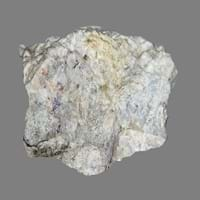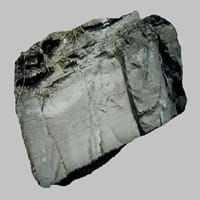Definition
Skarns are formed during regional or contact metamorphism and from a variety of metasomatic processes involving fluids of magmatic, metamorphic, and/or marine origin
A sedimentary rock, deposit of a submarine turbidity currents and are composed of layered particles
Origin
USA, Australia
European Foreland Basins
Discoverer
Tornebohm
Arnold H. Bouma
Etymology
From an old Swedish mining term originally used to describe a type of silicate gangue or waste rock.
From Medieval Latin turbiditas, from Latin turbidus (turbid). Turbidity current is from 1939
Class
Metamorphic Rocks
Sedimentary Rocks
Sub-Class
Durable Rock, Hard Rock
Durable Rock, Soft Rock
Group
Not Applicable
Not Applicable
Other Categories
Fine Grained Rock, Opaque Rock
Coarse Grained Rock, Fine Grained Rock, Opaque Rock
Texture
Earthy, Mud-rich, Rough
Mud-rich, Sandy
Color
Black, Brown, Colourless, Green, Grey, White
Black, Brown, Colourless, Green, Grey, Pink
Durability
Durable
Durable
Scratch Resistant
Yes
Yes
Appearance
Dull
Dull and Banded
Interior Uses
Decorative Aggregates, Entryways, Interior Decoration
Bathrooms, Countertops, Decorative Aggregates, Flooring, Homes, Interior Decoration
Exterior Uses
As Building Stone, As Facing Stone, Garden Decoration, Paving Stone
As Building Stone, As Facing Stone, Paving Stone, Garden Decoration
Other Architectural Uses
Curbing
Curbing
Construction Industry
As a Flux in the Production of Steel and Pig Iron, As a Sintering Agent in Steel Industry to process Iron Ore, As Dimension Stone, Gold and Silver production, Manufacture of Magnesium and Dolomite Refractories
As Dimension Stone, Cement Manufacture, Construction Aggregate, for Road Aggregate, Making natural cement
Medical Industry
Not Applicable
Not Yet Used
Antiquity Uses
Artifacts, Monuments, Sculpture
Artifacts, Monuments, Sculpture
Commercial Uses
Creating Artwork, Gemstone, Jewelry, Metallurgical Flux, Source of Magnesia (MgO)
Cemetery Markers, Creating Artwork
Types
Endoskarns
Not Available
Features
Host Rock for Lead, Zinc and Copper Deposits
High silica content, Host Rock for Lead
Archaeological Significance
Famous Monuments
Data Not Available
Data Not Available
Famous Sculptures
Data Not Available
Data Not Available
Pictographs
Not Used
Used
Petroglyphs
Not Used
Used
Formation
Due to change in environmental conditions, rocks are heated and pressurized deep inside the Earth's surface. Skarn is formed from the extreme heat caused by magma or by the intense collisions and friction of tectonic plates.
Turbidite is a type of sedimentary rock formed when a river carries or transports pieces of broken rock as it flows. These particles then settle down and are subjected to high temperature and pressures hence forming Turbidite.
Mineral Content
Calcite, Enstatite, Epidote, Garnet, Magnetite, Pyroxene, Titanite
Coesite, Quartz, Sand
Compound Content
Au, CaO, Carbon Dioxide, Cu, Fe, MgO
CaO, Carbon Dioxide, MgO
Types of Metamorphism
Burial Metamorphism, Cataclastic Metamorphism, Contact Metamorphism, Hydrothermal Metamorphism, Impact Metamorphism, Regional Metamorphism
Not Applicable
Types of Weathering
Not Applicable
Biological Weathering, Chemical Weathering, Mechanical Weathering
Types of Erosion
Not Applicable
Chemical Erosion, Coastal Erosion, Sea Erosion, Water Erosion, Wind Erosion
Grain Size
Fine Grained
Fine to Coarse Grained
Fracture
Irregular
Splintery
Streak
Light to dark brown
White, Greenish White or Grey
Porosity
Less Porous
Very Less Porous
Luster
Waxy and Dull
Metallic
Compressive Strength
Not Available
Cleavage
Slaty
Disjunctive
Specific Gravity
2.86
2.46-2.73
Transparency
Opaque
Opaque
Density
2.8-2.9 g/cm3
1.6-2.5 g/cm3
Resistance
Heat Resistant
Heat Resistant
Deposits in Eastern Continents
Asia
China, India, Russia, Saudi Arabia, South Korea, Sri Lanka
Not Yet Found
Africa
South Africa, Western Africa
Western Africa
Europe
United Kingdom
Austria, Belarus, Romania, Switzerland, United Kingdom
Others
Not Yet Found
Not Yet Found
Deposits in Western Continents
North America
Canada
Canada, USA
South America
Brazil, Colombia, Paraguay
Brazil, Colombia
Deposits in Oceania Continent
Australia
Central Australia, Western Australia
New Zealand, Western Australia
All about Skarn and Turbidite Properties
Know all about Skarn and Turbidite properties here. All properties of rocks are important as they define the type of rock and its application. Skarn belongs to Metamorphic Rocks while Turbidite belongs to Sedimentary Rocks.Texture of Skarn is Earthy, Mud-rich, Rough whereas that of Turbidite is Mud-rich, Sandy. Skarn appears Dull and Turbidite appears Dull and Banded. The luster of Skarn is waxy and dull while that of Turbidite is metallic. Skarn is available in black, brown, colourless, green, grey, white colors whereas Turbidite is available in black, brown, colourless, green, grey, pink colors. The commercial uses of Skarn are creating artwork, gemstone, jewelry, metallurgical flux, source of magnesia (mgo) and that of Turbidite are cemetery markers, creating artwork.










